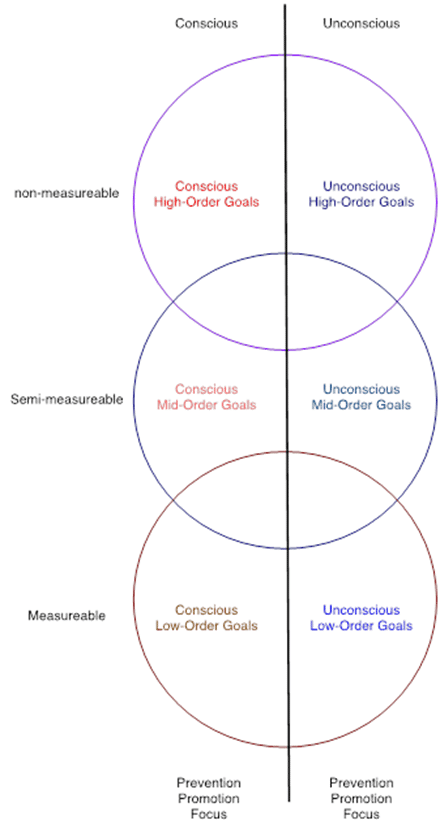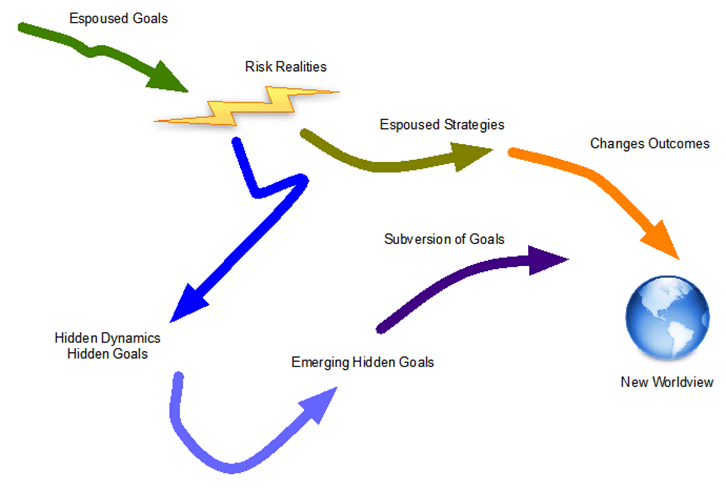Originally posted on July 13, 2015 @ 10:42 AM
Unless the safety community are prepared to be a bit more sophisticated and less simplistic about goal setting we will continue to fuel scepticism via non-sense prevention goals like zero harm, rather than safety promotion in the workplace.
Understanding Safety Goals
‘Rather than measure what we value, we tend to value what we can measure’
It is naïve to believe that goal setting is both simple and objective. How many times have you set a goal to give up something, to stick to a diet or to make less mistakes and fall back into old habits? We set goals all the time consciously and unconsciously. A goal is a desired end state that is constrained by: time, feasibility, other competing goals, motivation, desirability, ‘life space’, framing and disposition.
Goal setting is complex and multi-dimensional. There are three main goal-states. We can have high-order goals eg. ‘I wish to be a better person’; mid-order goals eg. ‘I want to give up sugar’ and, low-order goals eg. ‘I want to achieve 85% in my mathematics test’. These three levels of goal-states all command various levels of measurement. Goals also compete against each other. Low-order goals tend to be easily measurable and high-order goals less measureable. Mid-order goals tend to be semi-measureable. Each of these goal-states operate at conscious and unconscious levels. Each goal-state also tends to have either a promotion or prevention focus. These goal-states, levels and foci are represented in Figure 1. Human Goal States.
Figure 1. Human Goal States.
Unconscious and conscious goals are neither good nor bad. However, we must acknowledge that there are times when we surprise ourselves with our own behavior when non-conscious goals are revealed. Karl E. Weick said: ‘How can I know what I believe, until I see what I do’. Weick, like many scholars in social psychology believe that most of human behavior is generated by in the un-conscious, not the conscious mind.
Research by Libet, Wagner, Bargh and many experts in neuropsychology show that action and electrical impulses in the brain are slower than bodily action. In other words, most of what we do is sub-consciously generated and we simply attribute the feeling that our mind generated the action, when in fact it could not (based upon the measurement of electrical impulses from the body part to brain). It seems to us that we consciously cause what we do, when the evidence demonstrates that to be far from the case. People often feel like they are causing an act but the evidence shows that the act had already occurred before we had the ‘will’ to make it happen.
Our unconscious is not only powerful but also difficult to control. If I were to tell you not to think about or visualize black snakes for the next few hours something peculiar happens. You have been asked to not think about black snakes (prevention focus) yet before you have finished reading this article, you will think about black snakes again. Indeed, the more we try to suppress thoughts about black snakes, the more that vision returns. It is counter-intuitive but sometimes a preoccupation with suppressing something often activates it. This is how the subversion of goals works. This is often the experience of people trying to give up addictions.
So when it comes to goal setting it is naïve to think everything is simple and easy. Goal setting, pursuit and activation is both complex and highly subjective. This is why setting a goal like zero harm in some kind of simplistic objective bubble is such a non-sense.
The language and discourse of zero harm is neither singular nor non-competing. The language of zero-harm as a low-order measureable prevention focused goal also competes with numerous high-order a-measureable goals such as the pursuit of learning, well-being and the necessity to take risks. All goals interact between goal-states and affect each other. The focus on a non-promotion focused goal also triggers sub-conscious negativity and resultant scepticism. This negativity and scepticism serve as a by-product and subversion of the goal setting trajectory.
On many occasions we espouse a goal only to find out later that hidden forces have subverted the goal setting process. We set a goal to lose 5 kgs in weight in 2 months and this triggers other dynamics of sacrifice, peer dislocation and self-regulation. When goal-state realities influence the diet discipline process somehow things fall apart. Unconsciously, the very thing we have tried to achieve has become subverted by the by-products of our goal setting. This is represented in Figure 2. The Subversion of Goals.
This disruption to our espoused goal trajectory often leads to disappointment and depression when our goal is not realized. It is then that most people reframe that goal and develop a new view of what they thought they had set out to achieve.
The failure of goals is also further complicated by the process of thinking dissonance that often occurs. When people cannot face up to the fact that their goal has failed, they create new delusional excuses and deny that the goal has failed. Rather than admit that the goal was the problem, they project ‘spin’ about time factors and reasons why the goal was good but just failed this time, rather than admit the goal was the wrong goal.
Figure 2. The Subversion of Goals
Where does this leave us with the crusade for zero harm? The fact that so many workers don’t believe zero harm as a good goal and, are skeptical about it, is evidence that the goal and its discourse are completely ineffective. Prevention goals are more open to goal subversion that promotion goals. The goal of zero harm actually sets up its own subversion and failure.
Unless the safety community are prepared to be a bit more sophisticated and less simplistic about goal setting we will continue to fuel scepticism via non-sense prevention goals like zero harm, rather than safety promotion in the workplace.





Do you have any thoughts? Please share them below